In a historic move, the University of Washington is hosting a homeless encampment on its Seattle campus, the first such public university to do so. At the same time, MEDEX Northwest is offering an interprofessional course on homelessness, intended to educate health science students on how to effectively engage the homeless around their health care needs.
The UW 2-credit course, “Homelessness in Seattle”, begins on January 5th. MEDEX 580 is a 10-week course open to all current UW students in the health sciences. The course came about as a result of the actions of the UW, which has welcomed Tent City 3, a group of approximately 50 homeless individuals, to take up residence on a lot located along south campus through March 2017.
The course is the first of its kind in the nation organized under a university sponsored physician assistant training program, MEDEX Northwest. In large part it has come about due to the efforts of Lois Thetford, PA-C, a MEDEX faculty member and longtime advocate for the homeless.
We sat down with Lois and her course co-chair, Charlotte Sanders, MSW, a Teaching Associate at the UW School of Social Work, to learn more about MEDEX Course 580, “Homelessness in Seattle”, and how it came about. Both approach the subject of homelessness with passion.
“Homelessness is actually a much bigger issue than a 10-week course can address,” says Lois Thetford. “I see this as an evolving thing. The next time we do this, it won’t be exactly the same. The information in this course is very basic. Who are the homeless? What are their problems? Are these medical, mental health, or addiction problems? That’s just barely touching the ground level.”
Interprofessional Education
Designed as an interprofessional education course, MEDEX 580 is co-sponsored by several schools within the University of Washington Health Sciences: Medicine, Nursing, Public Health, Pharmacy, Dentistry, Physical Therapy and Social Work.
“That’s one of the things we want to model for the students,” says Lois. “Working in silos is a bad idea, and it’s especially bad when you’re working with the homeless population. No one profession has enough of the answers or resources to address the kinds of needs these patients have. So if you’re going to serve homeless people, you need to be interprofessional in your approach as a provider.”
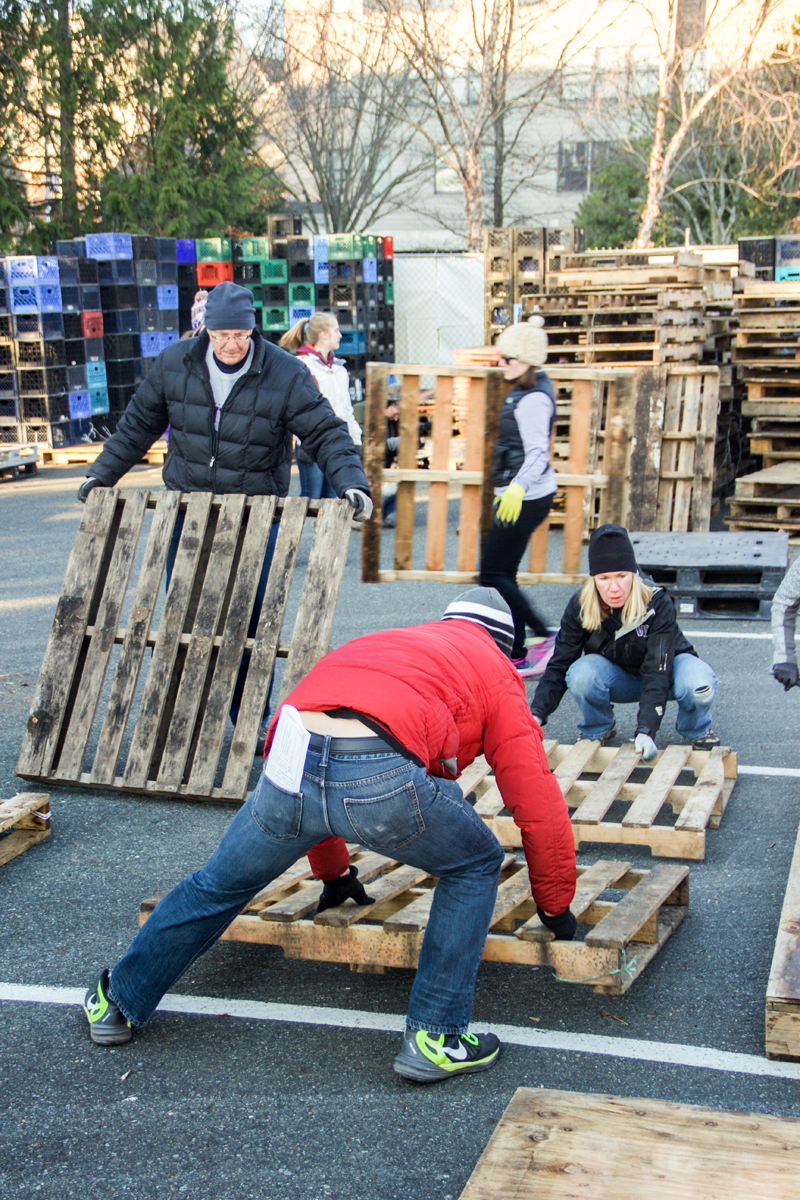
More often than not, medical providers are unskilled and untrained in how to work with homeless individuals, and that’s what this course will address.
“One of our health concerns with this population is trauma and its effects, not only to physical health but emotional and mental health,” says Charlotte Sanders. “Not all providers are conducive of a person’s trauma. It’s important to help students see what trauma-informed care looks like and how, with a few simple changes, they can alter their approach to care and make a world of difference.”
Lois recounts an instance where she referred a homeless patient to a specialist with shocking results. The patient—a woman with rheumatoid arthritis—was born with one kidney. “A lot of rheumatoid arthritis medicines are hard on the kidneys, so I sent her to a nephrologist.”
The woman returned, telling Lois, “I’ll never see that doctor again”. Learning that the patient was homeless, the provider had told her, “I don’t approve of your lifestyle, but I’ll try to help you.”
The specialist assumed that the patient’s homelessness reflected on her character, like she was a drug addict or a prostitute. “And that is a common misconception that providers can have,” adds Lois. “I wrote to the specialist, and said ‘this patient is homeless because of family dissolution, and the home was sold. That is the reason that she is homeless’. But, you know, he saw a poor, uneducated person and therefore, a person of low character. When really, I just needed him to advise me about how to treat her rheumatoid arthritis without killing her one kidney. Whatever his assumptions were, they were completely inappropriate.”
These are the attitudes among health care professionals that Lois Thetford and Charlotte Sanders hope to change with MEDEX Course 580.
Then, Lois offers up a shocking fact.
“Homeless people die an average of 30 years younger than the average American. It isn’t like they have different kinds of health problems. But their health problems go untreated, they progress, and then they have a lot of them. There is no way you can get the kind of care you need if you don’t have a stable place to live.”
Origins of the Course
The driving force behind the course has been the anticipated arrival of Tent City 3 on the University of Washington campus.
There are a number of Tent Cities in Seattle, and they fluctuate by the seasons. By and large, Tent Cities are a West Coast phenomena, organized around the principle of safety in numbers. People sleeping out on their own—under viaducts or in doorways—are often victimized, beaten and robbed. Tent cities are democratically organized, self-managed communities that offer security and operate within codes of conduct. Tent City 3 has one of the more rigorous standards for conduct, requiring sobriety, nonviolence, cooperation and community participation.
Seattle law requires all tent cities to relocate every 90 days to church or public lands. St. George Episcopal Church in Lake City, WA was site of the Tent City 3 encampment until Saturday, December 17. On that date the entire camp at the North Seattle church was broken down and moved to the UW campus. Approximately 75 volunteers, mostly students and faculty from the UW Health Sciences, were there to meet the TC3 residents.
Initially, a group of socially progressive students from across the UW health sciences came together as the Tent City Collective to request that the University host the homeless encampment on campus. The process took around a year and a half, and in June of 2016 UW President Anna Mari Cauce announced that the UW would house Tent City 3 on Lot W35 for three months starting in late December.
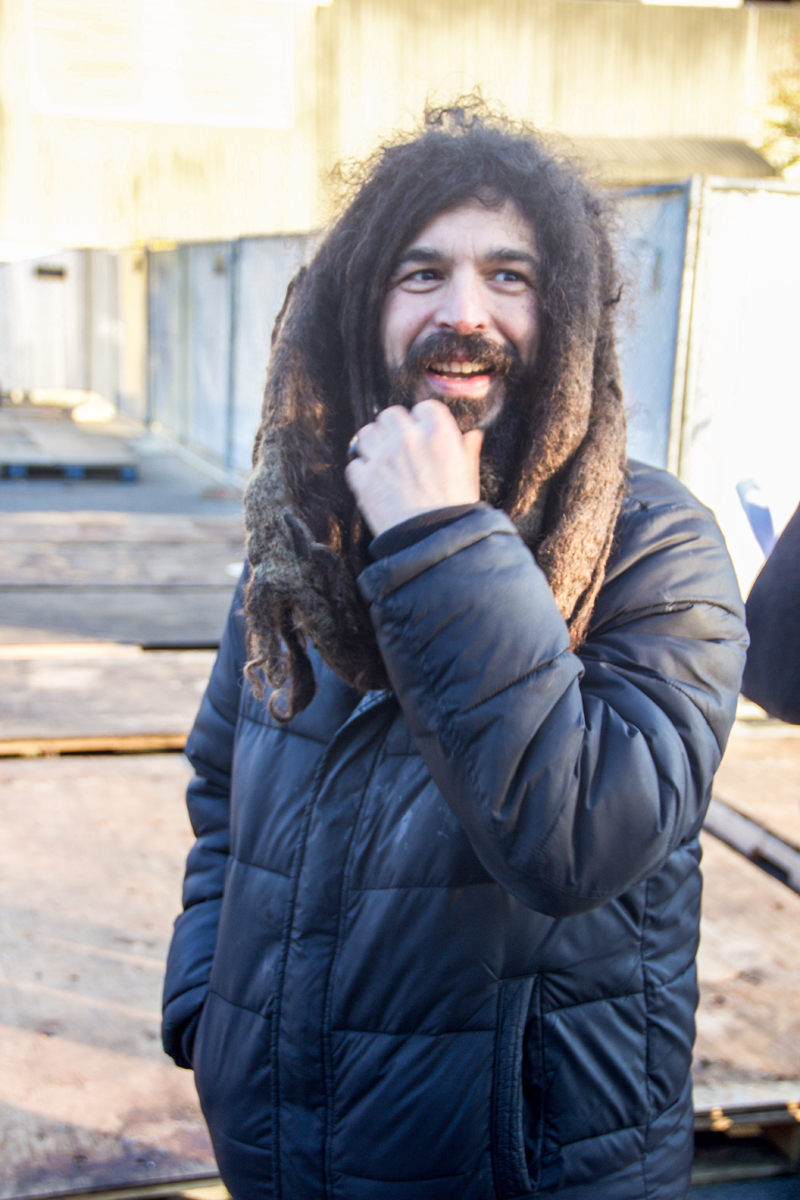
“It’s been a lengthy process for these students, but the group really worked within the system,” says Lois. Once they got word it was going to happen, the students approached Lois about developing a course to coincide with the arrival of Tent City 3 on campus “so we can know all the ways to be appropriate and helpful”.
Lois recruited Charlotte Sanders into the effort because of her background in working with young people experiencing homelessness. Together, they developed a syllabus for the 10 week course that draws upon the most experienced health professionals working on homelessness in Seattle. The lectures will also include speakers from Tent City 3, talking about their organization and community. See the full course syllabus here.
“Homelessness in Seattle” is open to 35 for-credit UW students, and an additional 15 individuals may audit the class in person at the UW classroom location. MEDEX Northwest will also livestream all MEDEX 580 lectures for anyone to audit at the MEDEX YouTube Channel. Lectures will broadcast live from 6:00 pm to 7:50 pm starting January 5th and for the nine subsequent Thursdays. The lectures will also be archived at the MEDEX YouTube Channel. See a list of scheduled speakers here.
“You can assume that the students participating in this class—even those people who watch the streaming lectures—will learn a lot about how to interact with homeless patients,” says Charlotte Sanders. “That would be our goal.”
The Causes of Homelessness
There are migrating populations that are always a part of homelessness. But according to Lois, the biggest modern cause of homelessness started in the 80s with deinstitutionalization by the Reagan administration. “All these people were turned out from institutions without funding for any alternative programs. There was an assumption that somehow community health services would be there to help these people.”
The definition of homelessness is “without safe and stable housing”.
“The thing about homelessness is that there isn’t one kind of homelessness,” says Lois. “There are many, many kinds of homelessness.” She begins to catalogue the causes.
“There is homelessness because a parent is in jail and there is no one to take care of you. There is homelessness of families that’s due to domestic violence. There is homelessness of young adults because they were in foster care and they don’t have the skills or the ability to support themselves. There’s the older veteran who has never quite overcome their war trauma because of the conditions in which they returned, and our very poor understanding of post-traumatic stress disorder, which is still debated within military establishments.”
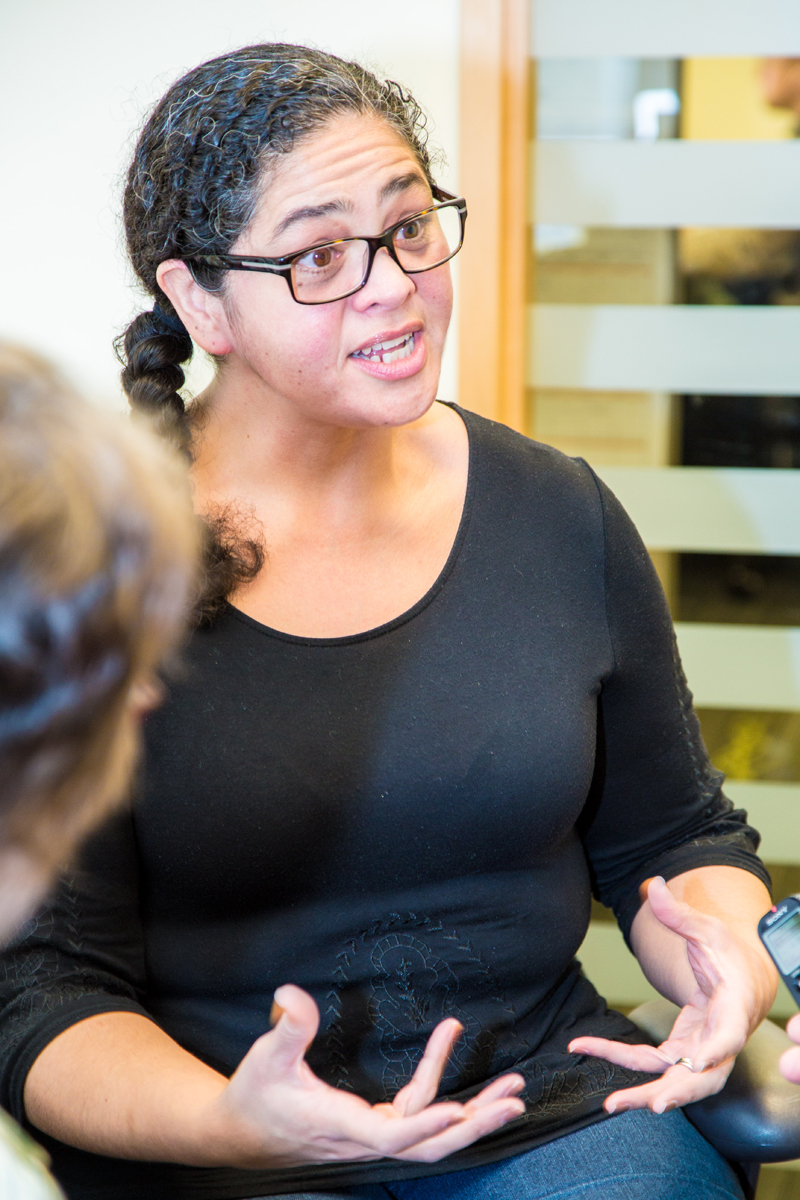
Charlotte Sanders names other contributors including poverty, racial discrimination, access to resources and displacement. “It’s really difficult to develop wealth when you don’t have it already,” she says.
“Everyone knows someone who’s been homeless,” adds Lois. “Homeless people aren’t them, they’re us.”
She recounts how, growing up, there was a man who lived on her family property for 15 to 20 years. ”He was a hobo handyman—someone who didn’t have a place to live, so he just bunked in our barn. He was something of an alcoholic, but he wasn’t dangerous to us.”
Then there was a niece who went to jail, leaving behind an 18-year-old daughter. “She stayed maybe a month or two with different relatives,” Lois says. “But basically she became homeless because her mother was imprisoned.”
“You know, homelessness is about poverty, it’s about racism, it’s about the school-to-prison pipeline, mass incarceration and the recidivism,” adds Lois. “And it’s about our rapacious economic system, how banks targeted low-income people for bad mortgages and took their life savings. Even if those savings weren’t very big, it was all they had.”
On this last point, Lois attended a national conference on homelessness in Washington, DC, and learned about the impact of the mortgage crisis between 2008 and 2012. An emergency housing director from Philadelphia reported a new category of homeless people, rendered so because of the subprime lending practices. “They were not our usual homeless population,” says Lois. “These were the well-educated homeless who were victims of mortgage fraud. They were consuming services that the true homeless population who would normally be using.”
Both Lois and Charlotte see something similar going on in Seattle right now due to the extreme absence of affordable housing. Six years ago nothing could get built in Seattle. Today developers are on a wait list for construction cranes. Within the city limits, speculators besiege single-family homeowners, offering high dollar amounts to build expensive vertical single-unit apartment buildings. Affordable housing options have quickly become a thing of the past.
“Homelessness can happen to anyone,” says Lois.
Brian’s Story
At Tent City 3, we spoke with Brian, a recently arrived resident to the encampment. His story underscores just how easily someone can fall into homelessness—and exemplifies the newer population that is ending up on the streets.
“I’ve never been homeless before—anywhere, in my entire life,” Brian tells us.
Tall, clean cut and in his early 40s, Brian and his girlfriend had a home in Seattle for the past three years. Both are employed. Tina works at a sous-chef at a high-end restaurant. Brian has his own moving business, a bit of an irony considering his present situation.
“We were in a spot where our neighbor was difficult, and we just couldn’t do it anymore,” he says. “We gave notice, but then our living situation that we were going to move into fell through. We weren’t adequately prepared.”
Brian and Tina ended up staying with friends. “But you can only impose for so long,” he says. “We didn’t have a lot of money. We ended up sleeping in the truck. We found ourselves in the absolute chilling cold last week when the temperatures hit freezing. It was unbearable. We were turning the truck on periodically to stay warm.”
During this time, they had driven by the Tent City 3 site in Lake City. “We were entertaining options, and I went in to talk to them,” says Brian. “They gave us a tour. We moved in.”
The two of them made the move from Lake City to the UW campus with the rest of the encampment.
 “My girlfriend and I were in bed last night all bundled up, laughing. We called this an urban living community, which happens to have tent homes. They have a huge set of rules at Tent City 3. I mean, it’s a community. Pitch in, or you don’t stay here. It’s drug and alcohol free. It’s for people caught in difficult situations. I’m grateful for it. I never thought I would say that.”
“My girlfriend and I were in bed last night all bundled up, laughing. We called this an urban living community, which happens to have tent homes. They have a huge set of rules at Tent City 3. I mean, it’s a community. Pitch in, or you don’t stay here. It’s drug and alcohol free. It’s for people caught in difficult situations. I’m grateful for it. I never thought I would say that.”
Brian reports that the first three days at TC3 presented a rough transition. “We had no idea,” he says. “Number one, we’d never been homeless before. Number two, we didn’t know anybody here. We didn’t know what to expect. We had no clue. It was a total crash course.”
Despite their novice status, Brian and Tina were welcomed. “There are some really smart people here, really nice people. They’re very accommodating. When we moved here they could tell we didn’t really know what we were doing. They’d come over and help. It’s an urban community that really cares about each other.”
Brian is impressed by the Tent City 3 operation, with its objectives and expectations.
“Originally, we were looking to get out of the gosh-darn cold, thinking about dropping coin on hotels and living paycheck to paycheck until we figured out what the heck we were going to do. After being here, and now that it’s not ice chilling cold, we’ll stick around for a while if it continues to work the way that it is. And we’ll save our money. Once we get a good solid first-last deposit—a few months of extra cushion—then we’ll go back out and attack it. We’re looking forward to that opportunity.”
Move Master
Jason Tavares is a resident of Tent City 3 and the designated “move master” during the relocation efforts to the UW campus. It’s a surprisingly organized scene at Lot W35, with wooden pallets being laid down in rows. These are then covered with plywood and plastic tarps, creating the base to raise individual tents. TC3 residents, UW students and faculty freely mix as the puzzle pieces take shape.
“I’m the one who makes sure all this happens,” he tells us. “We have enough room to fit one hundred people. Our permit allows us to have 99, but with the dorms we have an overflow capacity, so we can house 120. We won’t turn anyone away. Even if we’re full, we’ll put them in overnight somewhere.”
Tent City 3 has a full kitchen. The walls are constructed of plastic milk crates, zip-tied together into makeshift shelving, stocked with non-perishables. “We have electricity and a microwave,” says Jason. “One restriction is no open flame on the premises. There is electricity in the kitchen, the community tent and the computer tent, but not in individual tents.”
The group has a contract with Honey Buckets for regular servicing every three days.
“Our current roster says we’re housing 44,” explains Jason. “But we’ll get a lot of the locals out of the doorways and stuff. In some places we run people off, and we attract a bunch of others. Some of us will go out and talk to the public and try to get them to move over here. We let them know we’re here, and what we can do for them.”
Jason explains that Tent City 3 has more rules than most of the other places. “It’s a dry facility— you can’t show up wasted. No alcohol, no drugs inside the camp.”
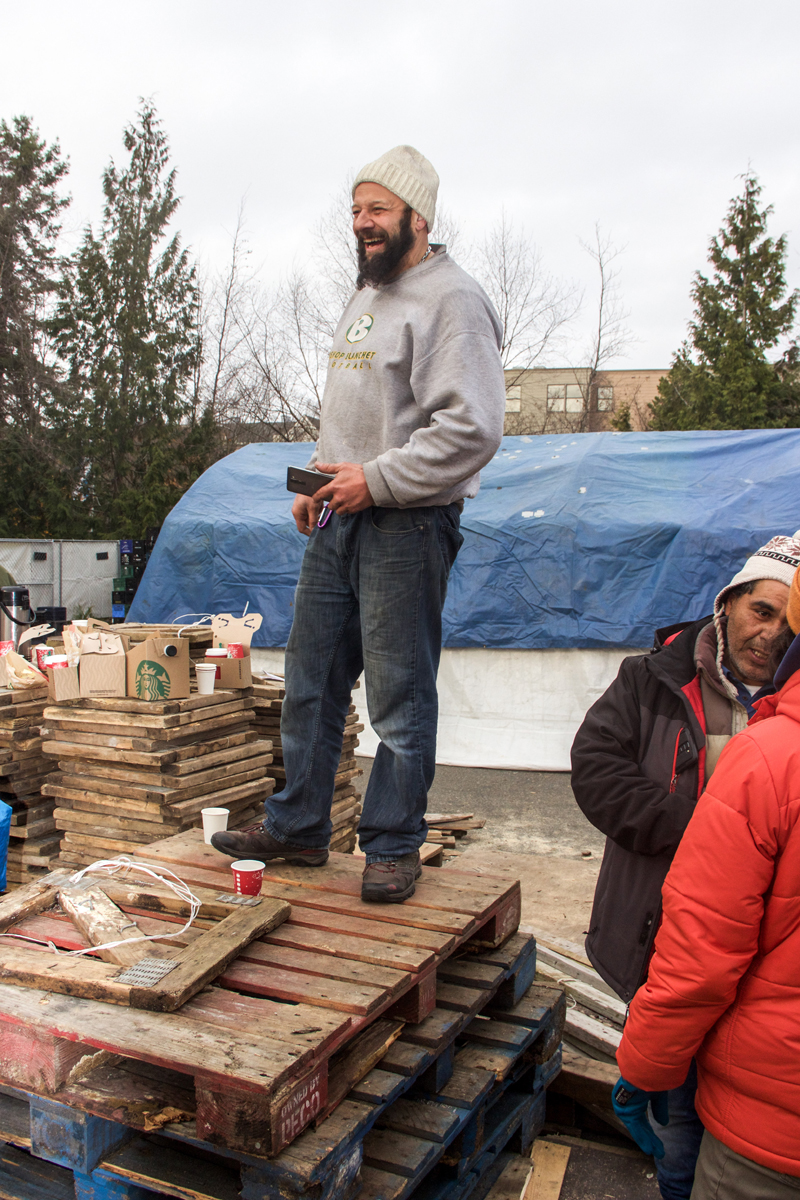
Tent City 3 gets ongoing supplies all of the time. “Nobody goes hungry around here,” says Jason. “We work with the Catholic Coalition, and they do right by us. But we have to present ourselves well.”
We wonder about the average length of stay at the encampment. “Some people stay, some people leave,” says Jason. “I’ve been with Tent City 3 for about 4 or 5 months. Before that I was in Wisconsin. I move around a lot. I tell people I’m a gypsy without the tarot cards.”
Like many people at TC3, Jason is hit hard by the high cost of housing in Seattle. “A lot of people here work. Even working, you can’t afford a place in Seattle it’s so damn expensive. Even for a studio apartment you’re looking at over $800 minimum, and that’s not even in a good area. $800 would be a bargain. Even minimum wage being high as it is, it’s still not enough to live.”
Spending time with Jason, it’s clear he has a strong sense of self worth. “I think the word ‘homeless’ creates a stigma,” he says. “You can be homeless and still be a productive member of society. You’re homeless because it’s expensive to live around here.”
Outreach Efforts
UW students enrolled in MEDEX Course 580 will be required to participate in outreach efforts to the homeless, whether that’s at Tent City 3 or elsewhere. Session 2 on January 12th is designed to instruct the students in engagement. As led by speakers Krystal Koop, MA, MSW and Nancy Amidei, MSW, both with University District Street Medicine, students will be trained in how to build working relationships with homeless clients.
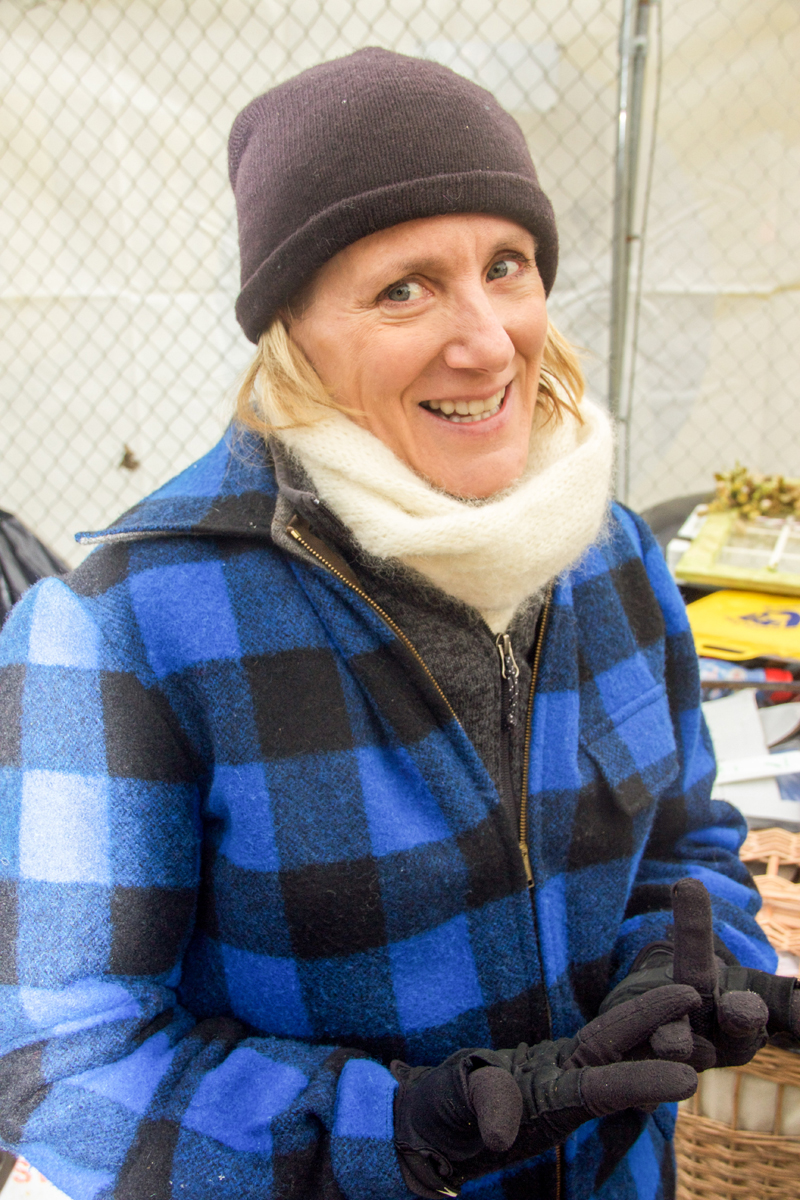
Lois Thetford explains. “Students approach people who appear to be living on the street, and try to engage with them. So, you know, hi, how are you, what’s going on? We are from this organization. Do you have any medical issues? Do you have medical coverage? Do you need any socks or snacks? That’s basically what initial outreach is like.”
Then the goal would be to try to meet some of those needs that are mentioned during that interaction. “Students would learn how to best refer or connect individuals to ongoing care and other services that are available,” adds Charlotte. “We want to assess what kind of services aren’t getting to people who live in tent cities. We don’t want to just hand out socks. We want to actually know what the unmet needs are.”
One of the assignments of the course—credit or not—is for students to pick an issue around homelessness that they could champion. “I’d like to see them choose an actionable issue in advocacy, something they think they could do something about, and report back to the class,” says Lois.
“We’re not studying the homeless,” she says. “We’re teaching students to engage with them.”
Organized outreach efforts will take place every Tuesday evening starting January 10th and continuing each subsequent Tuesday through February 28th.
Where To From Here
“With Tent City 3 on campus, the University of Washington has a great opportunity to model responsible civic behavior for other educational institutions and civic organization within Seattle,” says Charlotte Sanders. “After all, Tent City 3 needs a home after its time here at the UW. I think if we can help promote their need as well as their position as responsible neighbors, that will help.”
Both Lois and Charlotte hope that this course and its ideas catch on in a big way.
“My hope is that the ideas here will be contagious in some way, and that the students will start asking questions,” say Charlotte. “We might be starting the conversation for them, but they will take the conversation to their homes, and to other students that are within their departments or schools.”
* * *
The entrance to Tent City 3 is located in the University District at the intersection of NE Pacific Street and Brooklyn Avenue NE. As of this writing residents have requested specific donations including bottled water, hand sanitizers, baby wipes and deodorant.
For more information and to register for MEDEX 580, “Homelessness in Seattle”, go to the course website.

